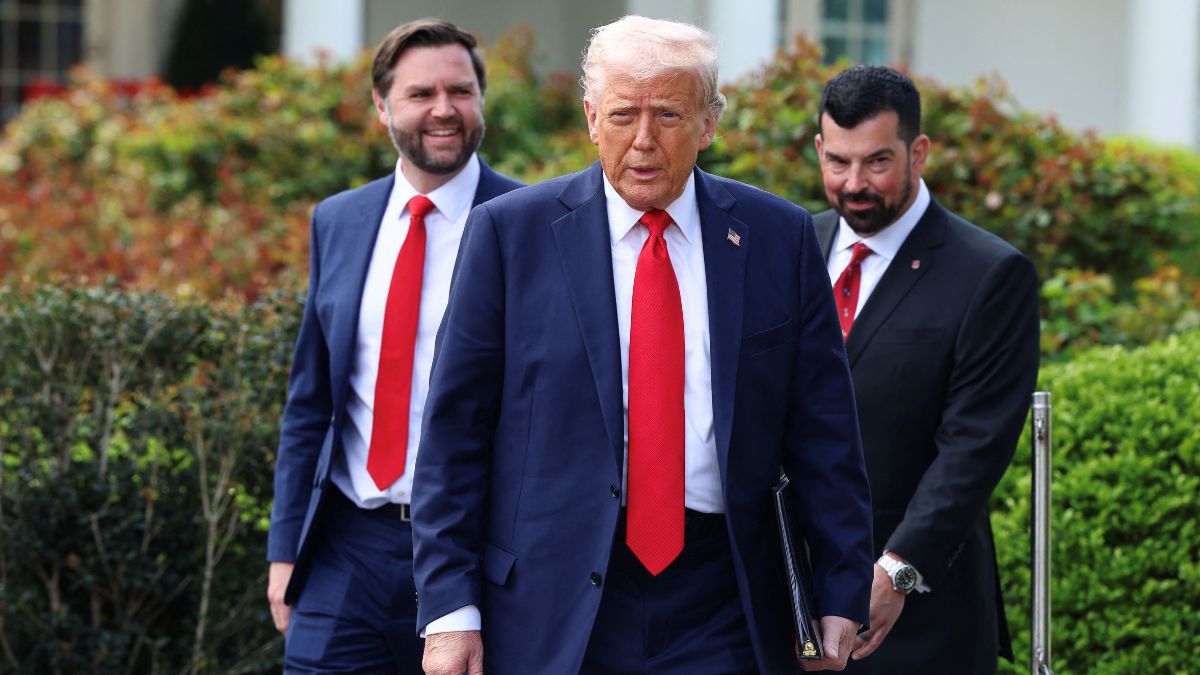Is Donald Trump planning to invoke a centuries-old law called the Insurrection Act?
Speculation is circulating online that the US President may bring the law into effect and declare martial law on April 20.
This rumour originates from an executive order he signed on the day he took office, which suggested such measures could be introduced within a 90-day period.
ALSO READ | Confused about Trump’s on-again, off-again tariffs? Here’s where we stand as of now
In this report, we explore what the law is, the rumours surrounding Trump’s possible use of it, and whether it has ever been enforced in the past.
What is the Insurrection Act of 1807?
The Insurrection Act of 1807, rarely invoked, allows the president to use federal troops or place National Guard units under federal control to suppress large-scale protests or civil disturbances.
It is one of the most powerful emergency powers available to a president.
Once enforced, the president can deploy the US military or National Guard to handle situations involving rebellion, civil unrest, or to enforce the law when it becomes “impracticable” to do so by other means.
Rather than being a single law, the Insurrection Act is a collection of laws passed by the US Congress between 1792 and 1871, all concerning the use of military force within the United States.
The law is an exception to the Posse Comitatus Act, which generally bars the federal military or National Guard from carrying out domestic law enforcement duties. Once the Insurrection Act is in effect, Posse Comitatus is temporarily suspended.
Notably, there are three ways troops can be deployed under this act.
First, if a state governor or legislature requests federal assistance to put down an uprising within the state.
Second, the president can act without a state’s consent when “unlawful obstructions, combinations, or assemblages, or rebellion” make it “impracticable to enforce the laws of the United States.”
ALSO READ | How fit is Donald Trump, America’s oldest-elected president?
Third, the president may also proceed without a state’s approval in two specific cases: if “any insurrection, domestic violence, unlawful combination, or conspiracy” prevents the state from enforcing laws that protect constitutional rights; or if such unrest interferes with carrying out federal law or justice.
However, before the president can proceed with the Insurrection Act, they must issue a formal proclamation instructing those disrupting law enforcement to disperse peacefully within a set time, according to a report by The Independent.
What is martial law?
Martial law refers to the temporary replacement of civilian rule with military control, typically enforced during periods of war, rebellion, or severe natural disasters.
Under martial law, a military commander overseeing a region or the entire country gains unrestricted power to create and enforce laws.
According to the US Department of Justice, it may be imposed when civilian authorities are no longer functioning, are completely absent, or are unable to maintain order.
During this period, civil liberties can be suspended, and the duration of martial law may be fixed or open-ended, depending on the situation.
In the United States, martial law has been declared at least 68 times, usually by state or federal officials, although no president has imposed it since the Civil War.
While martial law enables the military to assume control of civilian governance in a crisis, the Insurrection Act only permits the military to support civilian authorities without replacing them.
Is Trump planning to invoke the Insurrection Act?
After taking office in January, Trump issued an executive order declaring a national emergency at the US-Mexico border.
He also instructed US Defence Secretary Pete Hegseth and Homeland Security Secretary Kristi Noem to deliver a report within 90 days on the situation at the border to assess “whether to invoke the Insurrection Act of 1807.”
According to the New York Times, he had previously threatened to use the law during his first term amid the George Floyd protests.
Notably, Trump has already pushed the boundaries of executive authority to bypass the usual, slower legislative process for implementing his policies.
There are concerns that if department heads recommend invoking the act, the president could gain even more authority, supported by the military.
On April 9, fact-checking site Snopes published a piece examining claims that Trump plans to invoke the Insurrection Act and impose martial law on April 20.
ALSO READ | Trump guts Department of Education: How it will hurt students, parents across America
“As of this writing on April 9, this rumour existed more as a prediction than a provable claim,” Snopes noted.
“Searches of the websites for the Department of Defense, Department of Homeland Security and the White House yielded no announcements, statements or demonstrable evidence that might help to shed light on the unproven matter.”
April 20 marks the end of the 90-day deadline.
Was the Insurrection Act invoked before?
The Insurrection Act has been used at least 30 times in American history, with the latest instance taking place in 1992, when US President George H. W. Bush invoked it during the Los Angeles riots that followed the Rodney King verdict, according to The Independent.
One of the earliest and most notable uses was by Abraham Lincoln at the outset of the Civil War, after Southern states began to secede from the Union.
Another case was under former President Dwight D. Eisenhower, who invoked the act when the Arkansas National Guard blocked Black students from entering a school in Little Rock. Eisenhower responded by federalising the Guard, ensuring the students could attend classes.
With inputs from agencies


)
)
)
)
)
)
)
)
)